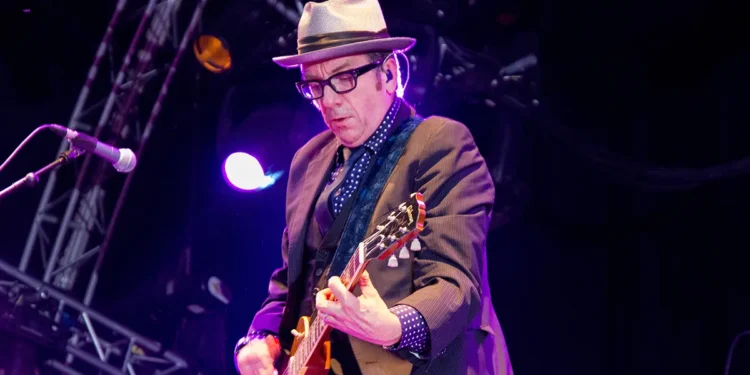Iconic musician Elvis Costello, born Declan Patrick MacManus in August 1954 in London, who has often drawn comparisons to Bob Dylan, speaks about longevity in the industry and keeping his “inner idiot” alive.
The singer-songwriter’s weaving, immersive talent emerged during the punk and new wave explosion of the late 1970s, although reinvention, versatility and determination have kept the icon relevant ever since.
The journey began in earnest with the release of debut album My Aim Is True, in 1977, featuring the hit Alison, which showcased his unique melody crafting. The long-player was an immediate success, showcasing a distinctive blend of punk energy and pop sensibility. However, a career on stage was never a real aspiration.
“I could sing, but I never thought of it as a career option,” says the 70-year-old. “My parents separated and I started associating music with a bit of sadness, and it went from there.

“I guess you can suppose that good things come out of bad events.”
Shortly after that debut, he formed his iconic backing band The Attractions, with whom he recorded several critically acclaimed albums, including those in subsequent years This Year’s Model (1978) and Armed Forces 12 months later, cementing a reputation as a masterful songwriter and incisive lyricist.
Throughout his career, Elvis Costello has collaborated with a diverse array of artists, including Burt Bacharach, Annie Lennox, Debbie Harry and Emmylou Harris, yet perhaps it is his work with Paul McCartney on 1989’s Flowers in the Dirt – one of 26 studio albums – that he should be most proud.
Three years earlier, he had already worked with the legendary producer T-Bone Burnett, in creating the Grammy-winning long-player, King of America, then also explored classical music with the Brodsky Quartet on The Juliet Letters in 1993.
No products found.
“For me it has always been about using different genres to express different emotions,” he says, much like Bob Dylan’s diverse musical explorations. “A song in a country style can be the same song as in a punk style – it’s got versus, choruses, a middle eight, an intro, and outro.
“Yet what you take from that track – what you absorb as the meaning and the effect it has one you, can be wholly different.”
What sets Elvis Costelloapart in the ever-changing music landscape is his ability to continually evolve without losing his core identity. Unlike many of his contemporaries, who have struggled to remain relevant, he’s thrived by embracing new ideas and adapting to the times, proving his songwriting prowess.
Costello, who is married to Canadian jazz singer Diana Krall, was entered into the Rock and Roll Hall of Fame in 2003, a testament to his enduring legacy.
“I don’t see myself as a pop star; I’m just a singer. While there’s some level of celebrity that comes with that, I don’t think I’m especially famous. I just like experimenting embracing that inner idiot!” He said in 2024.
Read This Magazine participates in the Amazon Services LLC Associates Program, an affiliate advertising program designed to provide a means for sites to earn advertising fees by advertising and linking to Amazon.com.







